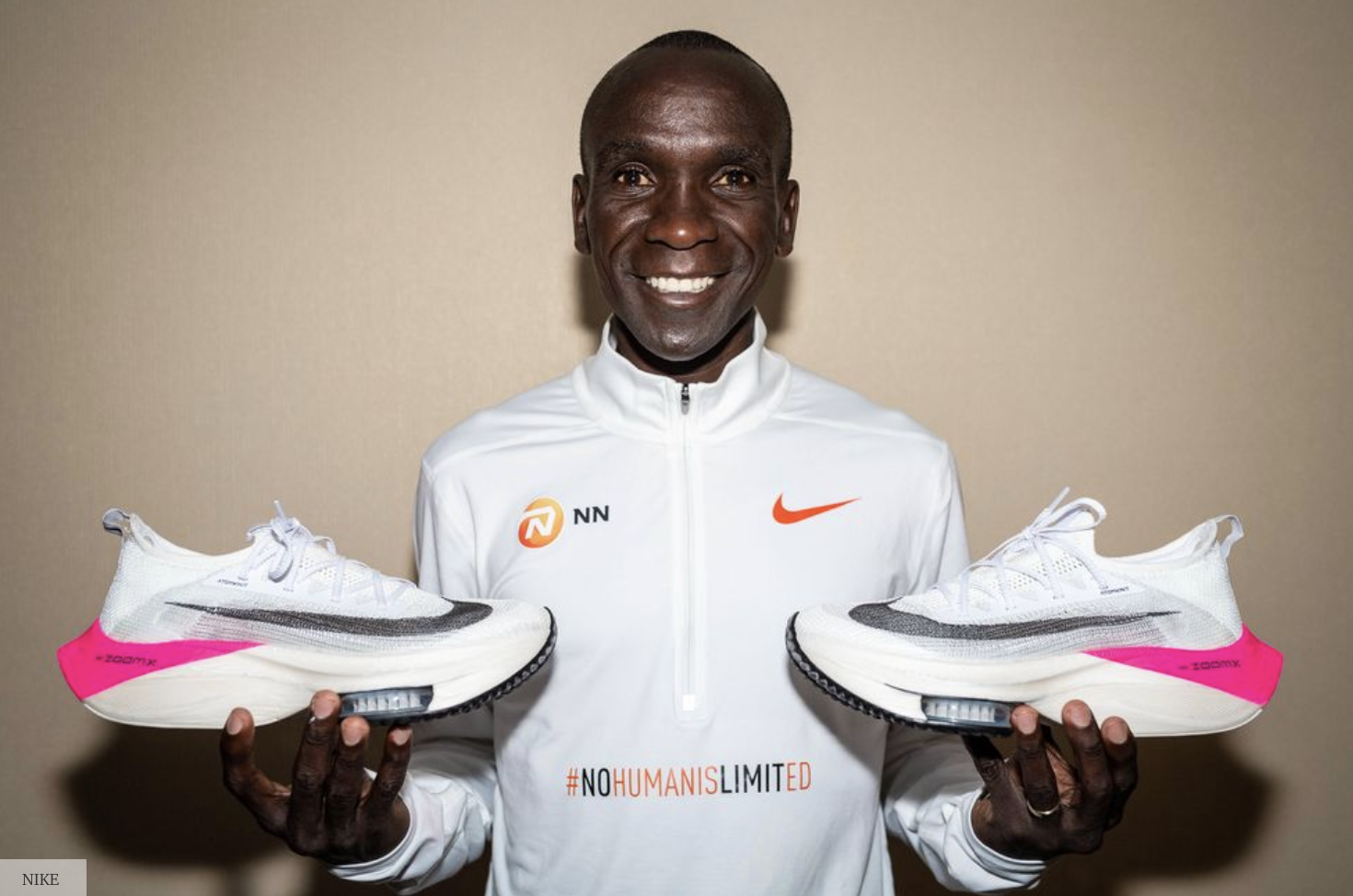Jacob Swinn
In the Beijing 2008 Summer Olympics, Michael Phelps and other swimmers wore full-body swimsuits by brands such as Arena, Speedo, and Jaked. The new technology in these suits allowed the athletes to ride higher in the water, reducing drag and thereby reducing fatigue at the end of races. By the 2009 World Championships in Rome, nearly every swimmer who lined up to race was wearing one of these full-body suits, and the record books were re-written. Notably, Paul Biedermann of Germany demolished the world records in both the 200 and 400 meter freestyle events, marks that were previously thought to be untouchable. However, by 2010, these “supersuits” had been banned by FINA, the world governing body for swimming, for providing an unfair competitive advantage. Records from the supersuit era of 2008-09 are only now being approached, while some, like Biedermann’s, haven’t come close to being broken. Biedermann himself provided one of the most extreme examples of the difference the technology in these suits made for the athletes, as he failed to even make the final in the 400 freestyle at the London Olympics without the aid of a “supersuit”.

Fast forward to 2020, and the same issue is happening again, only this time in marathoning. Eliud Kipchoge broke the 2-hour barrier for the marathon wearing Nike prototypes of the Alphafly, marketed (and proven) to provide a 4 percent increase in running efficiency and time. These shoes contain carbon-fiber plates and other technology that significantly reduce the pounding a runner’s legs take when racing 26.2 miles. While Kipchoge’s record-setting run was completed in a controlled environment and he wasn’t racing anything other than the clock, these shoes soon made appearances in races where there were real stakes on the line. According to the New York Times, as of February 1, 2020, the 5 fastest men’s marathon times in history have been run by athletes wearing some form of the Nike Vaporfly/Alphafly technology. Bridget Kosgei of Kenya smashed the women’s marathon world record wearing in October 2019 while wearing the same shoes. World Athletics decided in January of 2020 that these shoes , like the swimsuits mentioned above, provided an unfair competitive advantage and, in a lead up to Tokyo, voted to ban any shoes that had not been on the market for 4 months beginning April 30. While the shoes Kipchoge and Kosgei wore during their record-setting runs are still eligible to be worn, this ban limits the amount of technology that companies such as Nike are able to provide for their athletes.
While many sports have rules regarding what tech is allowed to be used in competition, some people believe that these bans stifle the creativity and ingenuity that brings better and more advanced technology to athletes of all skill levels. The biggest issue I have with technology like the Arena X-Glide swimsuit or the Nike Alphafly is that, in professional sports, athletes are beholden to their sponsors and thus may not have access to the same technology as their competitors. For example, if a Saucony-sponsored runner lines up next to a Nike-sponsored runner in a marathon where real prize money is on the line, and that Nike-sponsored athlete is wearing a shoe that provides a 4-5% advantage, that Saucony athlete has to face the reality that they may lose money in the race. At the same time, do we want to punish companies for being the first to design new and better technology for athletes? Where do we draw the line with technology allowed in sports?



Hi Jacob,
I really enjoyed reading your post as I have been following along with this storyline since its inception! You bring up some great points in relation to professional athletics and the potential advantages some athletes may have depending on their sponsors technology and innovations. However, isn’t this always the case? A popular Nike athlete most certainly has more resources at his or her disposal in comparison to someone being represented by a smaller, less lucrative company. Do you think that we should stifle innovation of companies? I tend to believe that the market will drive what companies design, produce and ultimately sell; and if we restrict them too much, we may damage the economy.
Hi Jacob,
Your article has some great points and comparisons about technology in the sports world. I had the privilege of hearing Tinker Hatfield, one of Nike’s top designers speak at a recent event where he talked about the new semi-ban on the carbon-fiber technology. He said that the ban was actually a compliment because it meant the company was doing something right. Moving forward the designers will have to be more creative to find ways to make their athletes move the fastest that comply with World Athletics’ rules.
I really liked reading this post. It is an interesting topic that I don’t know much about, so I enjoyed learning more about it from your post. Companies are ultimately always in competition with other companies, so I think new innovations such as these will continue to emerge. I think there is always a line somewhere in terms of what is considered to be “too much”, but if companies are restricted too much, then where would all the money go? It is important to always be creating new things, but I still wonder what would be considered over the top. Every company is going to strive to be the best, so there is going to continue to be a one-up mentality with brands involved. In the end, is creating a supposed “unfair advantage” worth it?
Hi Jacob, I really enjoyed reading your blog post. It brought something to my attention that I was not aware was an issue. Overall, I can see both sides of the argument but I side more with the side that the technology should not be allowed if it is providing an unfair advantage for the athlete. I think there are ways for brands like Nike to promote themselves at the Olympics (or other large sporting events) without giving the athlete an unfair advantage.
Hi Jacob, great post!
I grew up as a competitive swimmer and fully remember the craze of the full-body suits. A lot of the older and faster kids on my swim team got them when it came time for the Olympic Trials. After they were banned, it was still fun to see them wear the suits any opportunity they had (such as in practice meets where there weren’t really any rules). I am now somewhat of a runner, and I feel like the same thing is happening with the Nike shoes that happened with the full-body suits. Records are being broken now that were unthinkable as close as a few months ago. As a lifelong athlete, I have mixed feelings about the topic of advancement based on the tech of the equipment: on one hand, yes the equipment you use can help your performance, but at the end of the day the athlete is the one training and working hard to be the best they can be, and it is hard for me to see how a shoe or a suit can help ~that~ much. Without the athletes putting in the work to be great, the equipment would just be equipment.
You make a really good point about the advantage that Nike runners may have over other sponsored athletes due to the technology they provide. Nike is doing a fantastic job in terms of product innovation and I think that athletes should be allowed to use these new shoes to complement their training efforts and hard work. However, I also think that if one athlete has the opportunity to run faster just because of the shoe technology that a brand like Nike offers, all other athletes, regardless of their sponsor should be given the same opportunity. It would be an unfair advantage for Nike runners. I think if the use of new technologies is fair and inclusive, it should be allowed.
Hi Jacob!
Great post. This was a topic I actually did not have much knowledge about before. I think all of the comments are spot on about the conversation between a company’s creativity and innovation and how it battles with the rules of sporting events. However, I think there is also a conversation about new technology and how it can not only help our athletes swim or run faster, but help them from damaging their bodies. If the new Nike shoe reduces the pounding on a runner’s leg, why aren’t we trying to expand this technology so that athletes can better preserve their bodies?
I have followed both of these stories very closely, in fact, they have been some of my favorite tech/athletic stories to come about. The reason I enjoy them so much is that what these massive companies are doing is devoting a small portion of their assets into understanding human limitation and capacity in sport and changing the way we address those limitations. In Breaking2, for years we have known that the issue with breaking a two-hour marathon time is that the athlete would need the perfect conditions, on a perfect day, in the prime of their physical performance, all while being done in Berlin-the only place flat enough to not slow down a runner on hills. I think that for the purposes of understanding and redefining human capabilities there is no such thing as “too much tech.” However, in sport, a competitive marathon or during an Olympic event where we seek to see who performs best, tech is something that should have its limitations.
I have always been aware of these topics but have never had the chance to explore much further. This article was very well written and kept me tuned in to the real topic at hand about the types of obstacles athletes face everyday. The debate of whether this new technology gear is fair is solely up to the work that the athletes put in. As long as all of these products are available to everyone, there is no advantage to any particular individual. New tech gear that they have the ability to use would not do nearly as much as the hard work and dedication that the athletes put into their sport. I agree with both points though I do feel the gear is more of a way of lengthening the amount of time the athlete can put into the sport, not necessarily used as an advantage.
Really interesting topic and I’m torn on whether I think these technological advances should be allowed or not. One the one hand, if everyone has equal access to them (a big “if”) then I think it’s fine to allow them, but on the other are they “fair” or do they give an unfair advantage for certain athletes. I like the last point that you brought up, “do we want to punish companies for being the first to design new and better technology for athletes?” If a company is innovative enough to come up with something that is better than their competitors, why shouldn’t they be allowed to sell them and see their product being used on the highest stage? When looking at the swimsuits, they’re just full-body suits, why shouldn’t that be allowed? It’s not like there’s a fan attached to the back that propels the swimmer forward… now that would be too much tech. Anyways, really interesting topic and I’m not sure I am fully committed to either side of the debate.
Hi Jacob,
Thank you for your blog post! I was not formerly aware of controversies about technologically-advanced athletic equipment used in swimming and running. I think there are valid arguments for both sides of the situation. We do live in a world that is driven by technological innovation, so it makes sense that innovation would show itself in athletics. Also, all of these athletes who use this technology have already proven themselves to be talented in their sport, so it is not the technology that is making them successful. However, I feel like this technology is enabling the athletes to perform better than they usually would, so the performance is therefore not based only on their talent but also on what equipment they are wearing. It sets a dangerous precedent too, because when one athlete starts using this type of equipment, then everyone will feel pressured to use this equipment in order to stay competitive and relevant. It also is not fair to break the records of past athletes by using technology that they did not have access to at the time. Overall, this is a very complex topic, and I am inclined to believe that it will only become more complicated as time goes on.
Thank you for your insights!
Hi Jacob,
I really enjoyed reading your post. It made me think back to when I was on the swim team in high school when we would, as a team, shave our arms and legs and lather ourselves with tanning oil for the championships. In my mind I thought it was cheating because I was new to the sport, but looking around, I saw it would be a disadvantage not to oil up. As you mentioned, technology is ever-changing and with that sports may adapt. It is hard to keep the playing field fair while still allowing room for technological creativity. The question:”Where do we draw the line with technology allowed in sport?” will never be answered as long as people keep innovating new sport enhancing technologies.